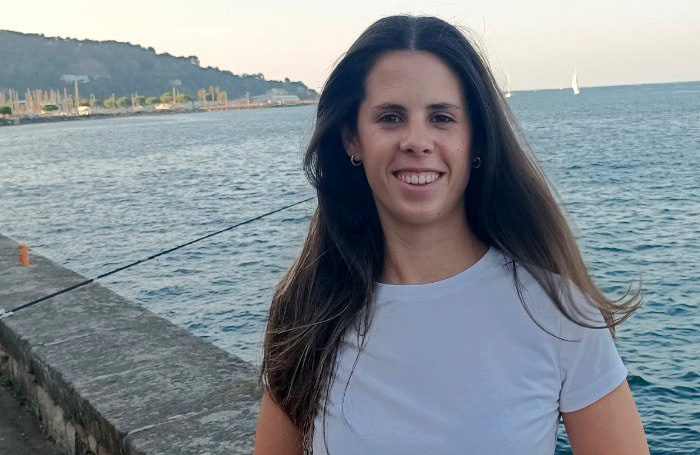
- Aiora Eizmendi Otaegi (Errezil, 1997) held the Higher Cycle of Administration and Finance and years later attended the Primary Education Degree at the UPV/EHU. In the journal Uztaro has published the study "Children and the Hitano of a Respiratory Space: Initiation and the Look of Adults" and we have been with him to talk about the topic.

You wanted to put the hitan in the middle. Why?
Being from a small town in the centre of Gipuzkoa, I can say that I have grown up and lived in a totally Basque environment. In addition to using the Basque language to communicate on a daily basis, I have had the opportunity to listen and get to know about this treatment that includes the Basque language. I've always listened to the Hitan people around, in family, in the street and among friends, but I've only listened, I've taken the step of use in a very small environment. Starting from the impression that this situation is becoming more and more common, I have put the Hitan at the centre to understand the reason or origin of this situation.
Research has been located in a small town in Gipuzkoa. Why?
The Bachelor's Degree in Primary Education, through the internship period, offers us the possibility of getting to know both the school and the students, and combining the theme of Hitano, the objective has been that boys and girls know the principles they have in Hitano. To do so, I wanted to choose a center that has a context similar to the one I have lived, a small town in an Euskaldun environment.
School environment, family, gender... What variables have you wanted to take into account so that boys and girls start using Hitano?
In the research I tried to take into account the largest possible number of variables that can influence the introduction of the use of Hitano by boys and girls, making use of the opportunity provided by the internship period to closely investigate both boys and the children's environment. The family, the circle of friends and the school have been the groups that I have taken into account when conducting the study, with different variables and types of relationships that can be found in it. All this without forgetting gender, given the role that gender plays in the use of Hitano, since in the first steps of this treatment it is important to take into account the differences that this variable entails.
What was the procedure?
I've used observations, interviews and questionnaires to collect data for the research. The first step has been to make observations to learn about the use of children in everyday life.
Analyzing the data obtained from the observations of students of different ages and genders, I identified 3 profiles of students by age, performing an individual dialogue to learn more about their use and perception of Hitan. At the same time, I have disseminated a survey among teachers and parents to get direct information about the children's environment.
What features appear for the child to start using Hitano? What do the results say?
Today, children learn Hitan by practicing with their peers, not as mere listeners, but as users. It is, of course, essential to know this treatment and therefore listen to it in the environment, but it has become clear that it is as important as listening to it. Among those who speak Hika the influence of gender has been noted, as among the boys the jump to the hitano occurs naturally, as among the girls it is more difficult.
You say that the trend of the use of Hitano is decreasing... How can we stop this trend?
We must overcome the stereotypes that have been related from generation to generation with Hitano, to extend this treatment to all genders and keep him alive in different environments. To do this, it is necessary that boys and girls have varied and solid models, collecting the use of Hitano from parents and teachers who are referents, as it ceases to be what is heard or not used as it is known. As mentioned above, the key is to use it, like any other language, as it is the best to learn by using it.
He has published the research results in the journal Uztaro. Are these platforms important?
I think the work done by these platforms is very important, as they provide us with a lot of data and information on different subjects.